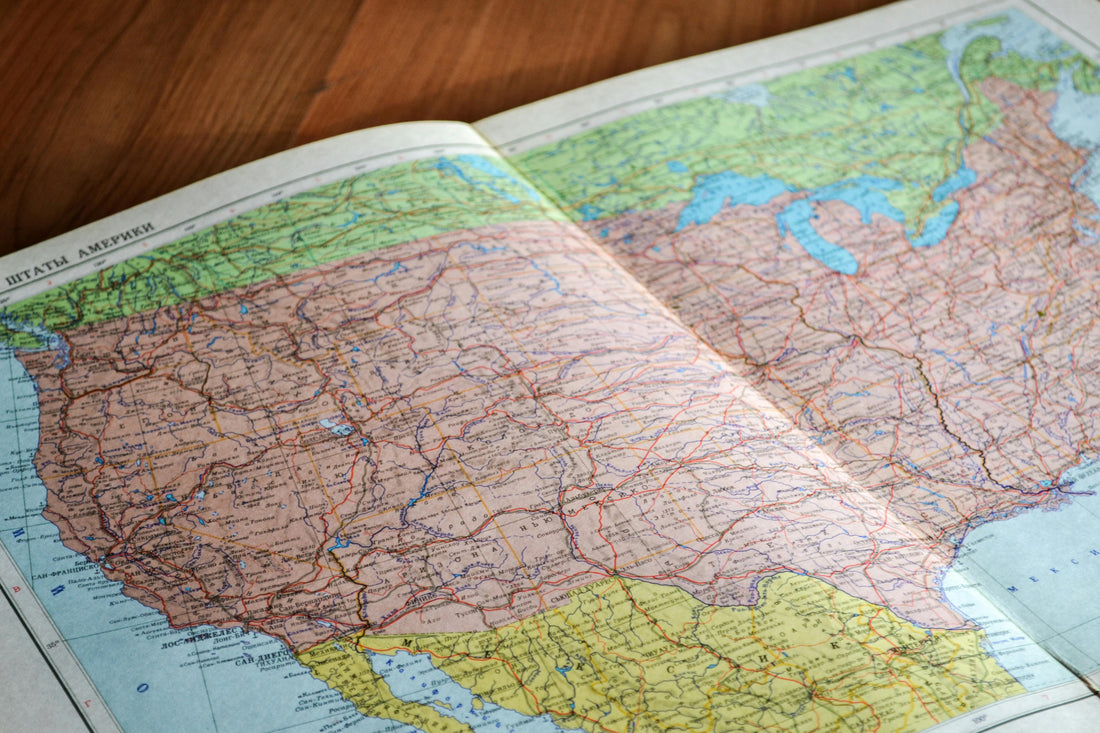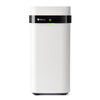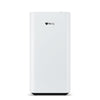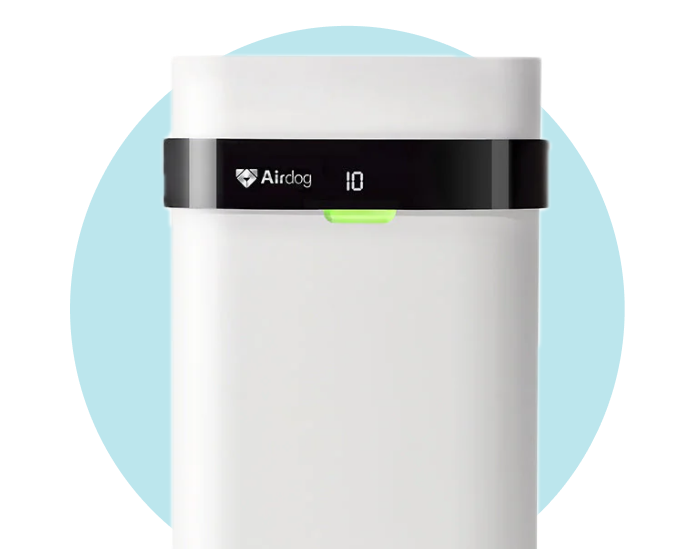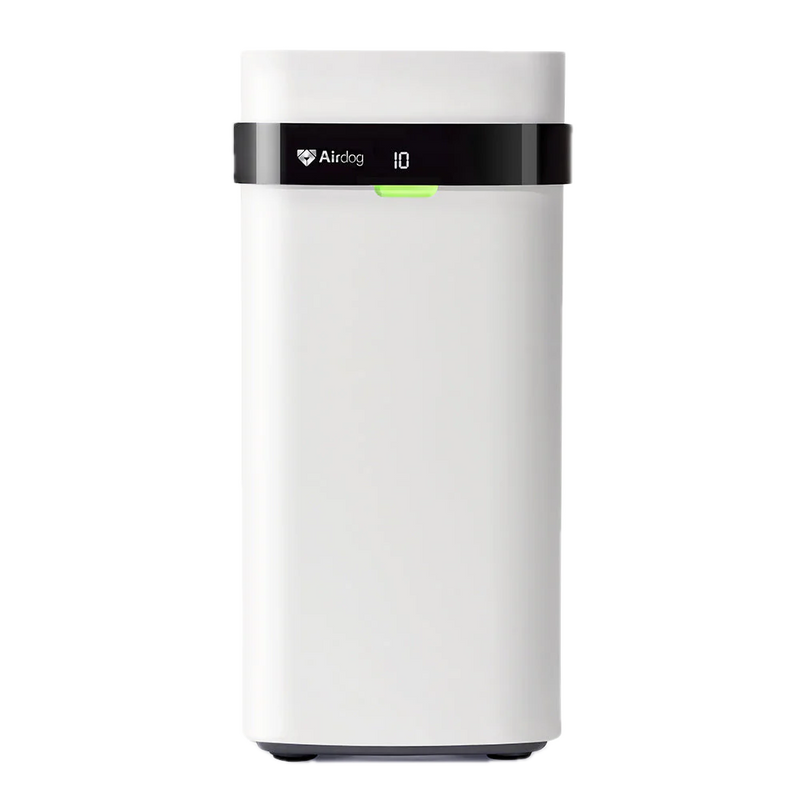Have you ever wondered why some homes seem to battle mold despite constant cleaning, while others remain pristine with minimal effort? The answer might surprise you and it has everything to do with where you live. Mold thrives in moist environments, making humidity levels play a crucial role in mold growth. By understanding which states harbor the least mold problems, you can make informed decisions about your living environment, enhancing your quality of life and potentially alleviating health concerns associated with mold exposure. Let's explore the environments where mold fears to tread.
Identifying Low-Mold States
The battle against mold is not solely won with bleach and persistent cleaning; it starts with the geography and climate of where you choose to live. States with lower humidity levels and less rainfall stand as states with least mold problems. Let's delve into the specifics that make certain states havens for those seeking refuge from mold-related concerns.
Nevada: The Champion of Dryness
-
Annual Rainfall: Receives less than ten inches annually, making it the driest state in the U.S.
-
Geography: Predominantly desert terrain, providing an inhospitable environment for mold growth.
-
Impact on Mold Growth: The arid climate significantly diminishes the likelihood of mold development, setting a benchmark for low-mold living conditions.
Arizona: The Desert Sentinel
-
Climate: Characterized by a desert climate in the southern part of the state and semi-arid in the central and northern regions.
-
Humidity Levels: Notably low, especially in the expansive desert areas, which cover a significant portion of the state.
-
Mold Risk: The dryness contributes to minimal mold growth, making Arizona a desirable location for mold-sensitive individuals.
Wyoming: High Altitude, Low Humidity
-
Geographic Features: Mountainous terrain and high plains dominate the state, contributing to its overall low humidity.
-
Precipitation: Receives modest rainfall, further reducing mold's ability to thrive.
-
Living Environment: Offers an appealing option for those prioritizing air quality and mold minimization in their living spaces.
Colorado: The Rocky Barrier Against Mold
-
Altitude: High elevation across the state results in thinner air and lower moisture content, unfavorable conditions for mold.
-
Climate Variation: While weather can vary, the overall dryness and cool mountain air act as natural deterrents to mold growth.
-
Indoor Air Quality: Residents benefit from the outdoor climate's influence on indoor air quality, lessening the necessity for extensive mold prevention measures.
New Mexico: Arid Climate, Minimal Mold
-
Rainfall: Features low precipitation levels, aligning with the trend seen in other low-mold states.
-
Humidity: Boasts one of the lowest average humidity levels in the country, creating an environment where mold struggles to survive.
-
Considerations for Residents: While the risk is lower, maintaining indoor humidity control remains essential for optimal health and comfort.
Through the lens of climate, geography, and environmental conditions, these states present a compelling case for those seeking to minimize their exposure to mold. Selecting a state with inherently dry conditions can be a proactive step towards a healthier, mold-minimized lifestyle. While no environment is entirely free from mold, understanding the factors that contribute to lower mold counts is a critical component in choosing a living space conducive to wellness and comfort.
The Role of Environmental Factors in Mold Growth
Understanding the science behind mold growth and the significant role environmental conditions play is crucial for homeowners, renters, and health enthusiasts. Mold thrives in moist, warm environments, making certain climates more susceptible to mold problems. However, drier states offer a natural defense against these concerns, highlighting the importance of environmental factors in both outdoor and indoor living spaces.
Understanding Mold's Preferences
-
Moisture: Mold requires moisture to grow. High humidity levels provide the perfect breeding ground for mold spores to settle and multiply.
-
Temperature: Warmth is another critical factor. Most molds flourish at temperatures between 60 and 80 degrees Fahrenheit, a common range inside many homes.
-
Food Source: Mold feeds on organic materials found in most buildings, such as wood, paper, and fibers.
-
Air Circulation: Poor ventilation contributes to stagnant moist air, encouraging mold growth.
By recognizing these preferences, individuals can take proactive steps to create environments less conducive to mold.
The Natural Mold Barrier of Arid Climates
States with arid climates naturally inhibit mold growth due to their low humidity levels and lack of precipitation. This natural barrier provides several advantages:
-
Reduced Humidity: The lack of atmospheric moisture makes it difficult for mold to establish and proliferate.
-
Cooler Nights: Desert climates often experience significant temperature drops at night, further reducing the overall average temperature and deterring mold growth.
-
Less Organic Material: Arid landscapes typically have less dense vegetation, reducing the amount of organic material available for mold to consume.
These factors contribute to the significantly lower mold counts found in states like Nevada and Arizona, enhancing indoor air quality and decreasing health risks associated with mold exposure.
Maintaining Low Indoor Humidity Levels
Even in low-mold states, maintaining low indoor humidity levels is essential. Here are strategies to mitigate mold risks further:
-
Dehumidifiers: Use dehumidifiers in areas prone to moisture, such as basements and bathrooms, to maintain a healthy indoor humidity level (ideally between 30% and 50%).
-
Proper Ventilation: Ensure adequate ventilation, especially in high-moisture areas. Use exhaust fans in bathrooms and kitchens to expel moist air outside.
-
Regular Maintenance: Check for leaks and fix them promptly. Inspect windows, roofs, and pipes regularly to prevent water intrusion.
-
Mindful Landscaping: In regions susceptible to sudden rains, landscape in a way that directs water away from the building's foundation to prevent moisture buildup.
By understanding the role of environmental factors in mold growth and implementing practical strategies, individuals can significantly reduce mold risks. This proactive approach supports healthier living environments, especially for those with sensitivities to mold. Additionally, acknowledging that no state is entirely mold-free underscores the importance of vigilance and regular home maintenance to combat potential mold issues effectively.
Health Implications of Living in High vs. Low Mold States
Mold exposure, particularly in long-term scenarios, poses various health risks, impacting individuals differently based on geographic location, climate, and environmental factors. The distinction between residing in high versus low mold states reveals significant differences in health outcomes, especially concerning allergies, asthma, and other respiratory conditions.
Reduced Allergy and Asthma Risks in Low-Mold States
In states where mold struggles to thrive due to low humidity and arid conditions, residents often enjoy a noticeable reduction in mold-related health issues. This phenomenon primarily benefits those with pre-existing respiratory conditions or mold allergies.
-
Fewer Allergy Symptoms: The American College of Allergy, Asthma, & Immunology notes that mold spores are a common trigger for allergy symptoms. Lower mold counts mean fewer triggers in the environment, leading to reduced instances of sneezing, itchiness, and other allergic reactions.
-
Decreased Asthma Episodes: Asthma sufferers may find relief in low-mold states. The lack of humidity and mold reduces the frequency of asthma attacks and the need for medication.
-
Improved Indoor Air Quality: Drier climates contribute to better overall air quality, as there are fewer mold spores circulating indoors and out.
Challenges Faced by Residents in High-Mold States
Conversely, individuals living in states with a high prevalence of mold face various challenges. Humid climates, such as those found in coastal or southern regions, create ideal conditions for mold growth, leading to an increase in mold-related health problems.
-
Increased Respiratory Issues: Exposure to mold can exacerbate respiratory conditions, leading to symptoms such as coughing, wheezing, and difficulty breathing. This is particularly concerning for children, the elderly, and those with compromised immune systems.
-
Greater Prevalence of Mold Allergies: In humid states, the constant exposure to mold can lead to the development of mold allergies. This condition can cause chronic sinus problems, eye irritation, and skin rashes.
-
Heightened Asthma Risks: For asthma sufferers, the high mold counts can trigger more frequent and severe asthma attacks. This necessitates a greater reliance on asthma medications and can lead to more hospital visits.
Navigating Health Risks Across Different Climates
The stark differences in health outcomes between high and low mold states underscore the importance of environmental factors in overall well-being. For individuals considering relocation, especially those with pre-existing health conditions, understanding the potential health implications of mold exposure is crucial.
-
Informed Decision-Making: Prospective homeowners and renters should assess the mold risk as part of their decision-making process. This includes researching state mold counts and considering the climate's impact on health.
-
Preventative Measures: For those in high-mold states, implementing mold prevention strategies becomes essential. This includes maintaining low indoor humidity levels and ensuring proper home ventilation to mitigate mold growth and its health implications.
Ultimately, the choice of residence can significantly impact health, particularly for those sensitive to mold. By considering the environmental conditions and potential for mold exposure, individuals can make informed decisions that prioritize their health and well-being.
Mold Prevention Strategies for Low-Humidity States
Even in the driest climates, where the likelihood of mold growth is significantly lower, a proactive approach remains essential for maintaining a healthy, mold-free home. For residents of states with minimal rainfall and lower humidity levels, adopting specific prevention tactics can significantly reduce the risk of mold taking hold within their living spaces. Below, we explore practical strategies to safeguard against mold infestation, ensuring your home remains a safe haven for you and your family.
Utilizing Dehumidifiers Effectively
-
Strategic Placement: Install dehumidifiers in areas prone to moisture accumulation, such as basements, laundry rooms, and bathrooms. These units work by extracting excess moisture from the air, creating an environment that is inhospitable to mold.
-
Regular Maintenance: Empty the water collection reservoirs frequently to prevent mold from developing inside the dehumidifier itself. Additionally, clean the intake and exhaust grills to maintain optimal performance.
-
Humidity Level Monitoring: Aim to keep indoor humidity levels below 50%. Many modern dehumidifiers come with in-built hygrometers that measure the air’s moisture content, allowing for automated adjustments to maintain desired humidity levels.
Managing Indoor Air Quality
-
Use of Exhaust Fans: Install and use exhaust fans in bathrooms, kitchens, and laundry areas to expel moisture-laden air directly outside, rather than allowing it to circulate inside the home.
-
Use of Air Purifiers: Install and use air purifiers such as Airdog’s TPA technology that will capture mold spores before they even have a chance to settle and grow.
-
Cross Ventilation: Open windows across different rooms to create a cross breeze, particularly during dry, sunny days. This natural ventilation helps to disperse moisture and refresh the indoor air.
-
Attic Vents and Fans: Ensure your attic is well-ventilated with sufficient vents or an attic fan. This prevents moisture accumulation in the attic, which can lead to mold growth in ceiling materials and insulation.
Conducting Regular Maintenance Checks for Leaks and Water Damage
-
Roof and Gutter Inspection: Inspect your roof and gutters regularly for signs of damage or blockage. Water from leaks or overflowing gutters can seep into the home, creating ideal conditions for mold growth.
-
Plumbing Maintenance: Check under sinks, around toilets, and behind appliances for any signs of leaks or condensation. Early detection and repair of plumbing leaks are critical in preventing mold proliferation.
-
Foundation and Exterior Checks: Examine your home’s foundation and exterior walls for cracks or gaps where water might enter. Seal any openings with appropriate caulking or sealants to keep moisture out.
Emphasizing Vigilance and Awareness
-
Routine Inspections: Regularly inspect less-frequented areas of the home, such as basements, crawl spaces, and storage rooms, for early signs of mold or moisture issues.
-
Educating Household Members: Teach all members of the household to be vigilant about preventing water spills, condensation, and humidity build-up. Encourage immediate reporting of leaks or moisture problems.
-
Professional Assessments: Consider hiring a professional to conduct a thorough mold assessment if you suspect potential mold issues or after experiencing water damage. Early professional intervention can prevent widespread mold contamination.
By incorporating these strategies, residents of low-humidity states can significantly diminish the risk of mold growth in their homes.
Mold Prevention With Airdog
Remember, prevention plays a crucial role when it comes to mold. With Airdog’s advanced TPA technology, residents are able to take control of mold prevention in their own homes. Our air purifiers have the ability to capture and destroy harmful particles as small as 0.0146 microns. Removing these ultra-fine and harmful particles from the air can help reduce the impact of mold growth in resident’s homes no matter what state they live in.
Conclusion
By understanding the role of environmental factors in mold, implementing a combination of mold prevention strategies, and keeping up with home maintenance, residents of states with traditionally low mold problems can continue to enjoy the benefits of a mold-minimal environment even as the climate changes. Utilizing dehumidifiers and managing indoor air quality effectively are key components in ensuring that homes remain safe, healthy spaces for everyone.

